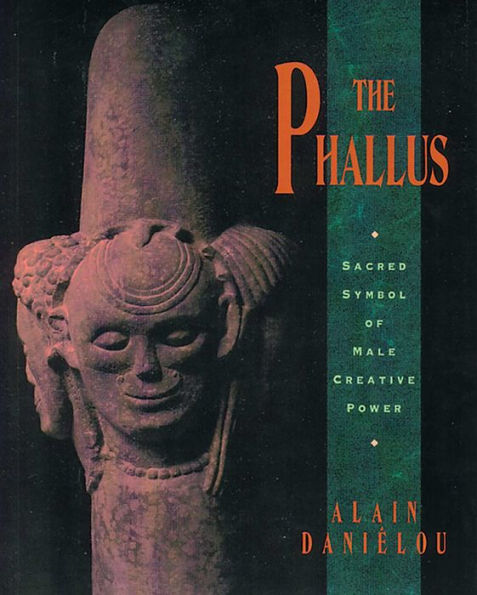The Phallus: Sacred Symbol of Male Creative Power
Beginning with an overview of the symbolism of creative forces in general, The Phallus first examines the representation of male fertility in such forms as the menhirs or standing stones of prehistoric Europe; the Mahalinga and Svayambhu of India; and the ancient Greek Omphalos. The second part of the book surveys the presence of ithyphallic gods in archaic shamanistic religions (the Lord of the Animals), the Greek pantheon (Hermes, Priapus), and the Hindu deities (Ardhanarishvara, the androgyne). Danielou also explores the role of Shaivist and Dionysian initiatory rites in bringing men into communion with the creative forces of life. Illustrated throughout with photographs and line drawings of European and Indian art, The Phallus celebrates the expression of the masculine in the religious traditions of East and West.
Phallic imagery, in one form or another, may be found in the artistic traditions of virtually every world culture since prehistoric times. Alain Danielou here unveils the religious impulse underlying art that at first glance seems to have no purpose beyond the erotic.
"1141099593"
Phallic imagery, in one form or another, may be found in the artistic traditions of virtually every world culture since prehistoric times. Alain Danielou here unveils the religious impulse underlying art that at first glance seems to have no purpose beyond the erotic.
The Phallus: Sacred Symbol of Male Creative Power
Beginning with an overview of the symbolism of creative forces in general, The Phallus first examines the representation of male fertility in such forms as the menhirs or standing stones of prehistoric Europe; the Mahalinga and Svayambhu of India; and the ancient Greek Omphalos. The second part of the book surveys the presence of ithyphallic gods in archaic shamanistic religions (the Lord of the Animals), the Greek pantheon (Hermes, Priapus), and the Hindu deities (Ardhanarishvara, the androgyne). Danielou also explores the role of Shaivist and Dionysian initiatory rites in bringing men into communion with the creative forces of life. Illustrated throughout with photographs and line drawings of European and Indian art, The Phallus celebrates the expression of the masculine in the religious traditions of East and West.
Phallic imagery, in one form or another, may be found in the artistic traditions of virtually every world culture since prehistoric times. Alain Danielou here unveils the religious impulse underlying art that at first glance seems to have no purpose beyond the erotic.
Phallic imagery, in one form or another, may be found in the artistic traditions of virtually every world culture since prehistoric times. Alain Danielou here unveils the religious impulse underlying art that at first glance seems to have no purpose beyond the erotic.
15.99
In Stock
5
1

The Phallus: Sacred Symbol of Male Creative Power
128
The Phallus: Sacred Symbol of Male Creative Power
128
15.99
In Stock

Product Details
| ISBN-13: | 9781594777318 |
|---|---|
| Publisher: | Inner Traditions/Bear & Company |
| Publication date: | 11/01/1995 |
| Sold by: | SIMON & SCHUSTER |
| Format: | eBook |
| Pages: | 128 |
| File size: | 6 MB |
About the Author
From the B&N Reads Blog
